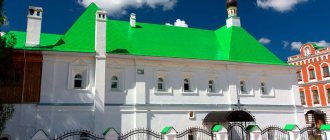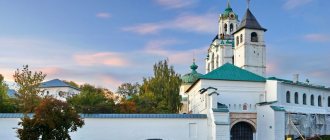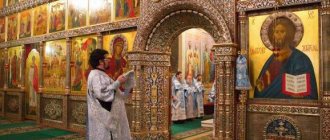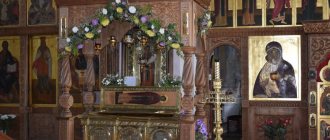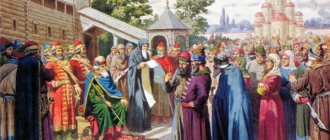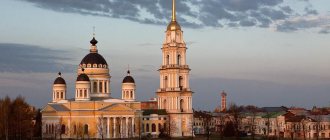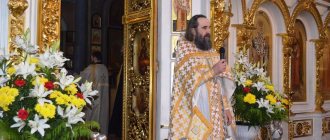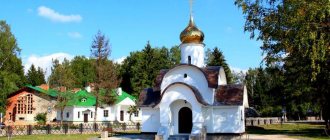The Spaso-Preobrazhensky Monastery is one of the main attractions of Yaroslavl. Great events took place within its walls; he became a witness and participant in the most important historical and turning points in the life of the city; he was originally intended to play the role of protector, guardian and spiritual mentor. Today, one of the most ancient monasteries in Russia is a cultural heritage site. Its architectural and artistic wealth and unique historical heritage constitute the main fund of the Yaroslavl Museum-Reserve, which has the status of state significance.
Spaso-Preobrazhensky Monastery, © Maria Chakhnashvili
History of the Spaso-Preobrazhensky Monastery
The wooden structure was erected in the 12th century on the left bank of the Kotorosl River, near the crossing. In the system of city defensive lines, it was allocated a strategically correct location, ensuring protection of the city from attacks by enemies from the western borders.
Hotels near the Spaso-Preobrazhensky Monastery (Yaroslavl)
There is no reliable evidence about the exact date of foundation of the monastery, but the first mention of it was preserved in the chronicles for 1186. Exactly thirty years later, in another historical document, the beginning of the construction of the stone Transfiguration Cathedral was noted.
Spaso-Preobrazhensky Cathedral, © Ena
At the beginning of the 13th century, a religious school and a collection of handwritten books, rich for that time, appeared within the walls of the monastery. A small Church of the Entrance to Jerusalem was erected on the territory, which has not survived to this day. The Spaso-Preobrazhensky Monastery turned into the religious and cultural center of the Yaroslavl principality. The confessors of appanage princes allowed themselves to interfere in the politics and private lives of their charges, remaining, however, always on their side. Representatives of the princely family were buried in the Cathedral until the final entry of Yaroslavl into the Moscow Principality in 1471.
In the Yaroslavl Monastery, the miracle-working princes Fyodor, David and Konstantin, revered in Orthodoxy, metropolitans, archbishops and local governor F. J. Friede (1838-1896), who earned the respect of the townspeople, were buried.
In 1501, a severe fire occurred in the Spaso-Preobrazhensky Monastery, as a result of which most of the buildings suffered serious damage. The cathedral had to be dismantled, but the foundation turned out to be so strong that they decided not to dismantle it, but to use it as the basis for a new stone cathedral. The structure was erected in the image and likeness of Moscow churches and consecrated in 1516. The ancient structure is today under state protection.
In the middle of the 16th century, the monastery was surrounded by stone walls. It was they who made it possible to survive the siege of the Time of Troubles.
Internal walls of the Spaso-Preobrazhensky Monastery, © Ena
The Spaso-Preobrazhensky Monastery was the most fortified of all urban buildings in Yaroslavl. Ivan the Terrible loved to visit here, and Minin and Pozharsky received blessings here when setting off on a liberation campaign against Moscow. In the 17th century, the complex expanded rapidly, new structures were erected, external walls were expanded and strengthened. The monastic settlement consisted of more than 300 households, and the influence of the clergy grew steadily.
Construction and establishment
The modern cathedral is the result of centuries of construction. The first - Konstantinov - cathedral stood until the fire of 1501. Although it was made of stone, in the “big fire” the masonry was damaged and the structure became unreliable. The cathedral was dismantled, and Moscow craftsmen, who were specially sent by Vasily III, were invited to build a new one in its place. That’s why we see today in the oldest Yaroslavl church the outlines are somewhat Moscow, evoking the heads of the Kremlin churches of the capital.
However, talented craftsmen did not contradict the emerging unique tradition of building Yaroslavl churches. On both sides of the cathedral, built in 1506 - 1516, it is as if surrounded by a gallery with arched openings; in the past there was also an elegant front porch, which has not been preserved. The gallery served as a repository for books and took the place of the former “open walkway”.
In terms of internal architecture, the Spassky Cathedral is a four-pillar temple on a high basement. It is crowned with three helmet-shaped heads on massive (in Moscow) drums, surrounded (in Yaroslavl) by kokoshniks and resting on uncovered zakomaras.
The skill of Moscow architects is evidenced by the amazing proportionality and harmony of all parts of the temple at that time. From the east, with narrow loophole windows and blank walls, it is simple, strict and majestic, like a warrior monk. The western facade, with a stepped arrangement of volumes and the opening of the triceps in perspective, is complex, picturesque, humane and speaks of the secular service of the monastery, where they pray for each of us.
In 1563–1564, the cathedral was painted by Muscovites Larion Leontyev, Tretyak, Fyodor Nikitin and Yaroslavl residents Dementy and Afanasy Isidorov. The frescoes painted by them are the oldest in Yaroslavl. Their value, however, does not lie in their antiquity alone: only two Russian monasteries - the Assumption (Sviyazhsk) and Spaso-Preobrazhensky (Yaroslavl) - have preserved wall paintings from the 16th century in their entirety.
At the same time, the first tower of stone was erected for the cathedral - the Holy Gate - and a large iconostasis was created, from which 13 icons of the Deesis order (icons depicting the Church’s prayer for peace in the broad sense of the word), a temple image and 3 icons of the local row have been preserved to this day ( locally revered saints).
In the 16th century, the Nativity Church, the Refectory Chamber, and the belfry were built. By the end of the 60s of the 16th century, Ivan the Terrible granted the monastery 55 charters, according to which 239 villages and 6 settlements, salt pans and fishing grounds passed into the ownership of the community. Moreover: Grozny granted the monastery exemption from taxes at the settlement and immunity in court.
The son of Ivan the Terrible, Fedor, continued the tradition of giving. He granted the community 12 certificates of financial support.
Museum-Reserve of the Spaso-Preobrazhensky Monastery
The monastery lost its direct purpose in the second half of the 18th century, when the metropolitan department was transferred from Rostov to Yaroslavl. The complex received the status of a bishop's house. A theological seminary was opened here, another church, a chapel and a sacristy were built.
The official founding date of the Museum-Reserve is January 12, 1865. It was created on the initiative of representatives of the Yaroslavl Research Society, which deals with natural historical sciences. Funds and exhibitions were supported by donations and government subsidies. Today, the Museum includes a natural science department, which is the legal successor of the Society and the custodian of its collections.
One of the exhibitions of the museum-reserve, © Ena
A rich heritage remains from the monastery - monuments of architecture and icon painting, collections of books and documents, ancient frescoes and an extensive numismatic collection. The object is considered the golden fund of Russian history.
The museum collection of the Spaso-Preobrazhensky Monastery includes more than 300 thousand exhibits of history, culture, art, one way or another connected with the Yaroslavl land.
In the 20th century, numerous artifacts, artistic treasures and unique exhibitions were collected. The Museum-Reserve includes churches, a cathedral, architectural monuments, masterpieces of painting and iconography. After the 1990s, part of the buildings of the Transfiguration Monastery was transferred to the joint use of the local diocese and the state complex.
Spaso-Preobrazhensky Monastery - official website
Monastery Museum
Today you will not meet a large number of pilgrims in the monastery; in Soviet times, the building of the complex became a historical museum and in modern Russia the buildings are under the administration of museum staff.
Important! Ancient buildings and architectural structures have been taken under the control of UNESCO, and a visit to this complex is included in the program of not only the bus or car “Golden Ring”, but also travel on ships.
The monastery is one of the oldest buildings with more than eight centuries of history. The value of the monastery is not only in the architectural buildings, but also in the museums operating on the territory of the complex. Museum exhibitions include collections of icons and books telling the history of Orthodoxy, painting, and the development of fresco and decorative arts.
Once outside the walls of the monastery today, you find yourself in a completely new world, surrounded by snow-white walls. Peace and quiet reigns here, even tourists and foreigners asking for help do not interfere with enjoying the solitude. It seems that time has stopped and you are plunged into the historical era of princes walking along the paths around the temples, kneeling in front of the icons in the temple and numerous raids of enemy peoples.
May 1: Spring and Labor Day
How to celebrate May 1, where to spend this day and how many demonstrations are currently taking place? What films to watch and what to read?
It is surprising that the location and climatic features of Yaroslavl provide a unique opportunity to admire the monastery at any time of the year. In winter, it is shrouded in a snow-white cover like a blanket. Its walls merge with the ground, creating the impression that it is in airless space, in weightlessness.
In autumn, the trees play with all the colors of the rainbow and give guests an amazing smell of autumn and coolness. If you visit in early autumn, you will find bright red apples on the trees and autumn flowers in the flower beds. (see Cathedral in the name of Alexander Nevsky)
In spring it is covered with renewed greenery and sun rays, the blossoming of apple trees and early flowers is accompanied by the freshness and aroma of summer.
In museums, guests of Yaroslavl are presented with permanent and temporary exhibitions that come to the city from other parts of the country. A special place is occupied by the exhibition of ancient Russian painting. Yaroslavl masters of icon painting were famous throughout the Russian land for their skill, ability to convey an image and create a “living” appearance.
Each icon is painted down to the smallest detail, the compositions are verified, but the icons are distinguished by the Yaroslavl flavor - pomp and brightness, combined with meekness. The masters did not use blue in painting; the palette consisted of ocher and shades of brown. Most of the exhibits were taken from the main cathedral of the monastery.
At the exhibition: “Treasures of Yaroslavl”, guests see jewelry, books, clothes of the rich and sacred books collected in the churches of Yaroslavl at different times. Precious metals and jewelry are adjacent to the 13th century Gospel - the oldest scripture of the Slavs.
One of the halls is occupied by frames for icons and books of sacred scriptures, as well as examples of enamel creations by Rostov, Moscow and Ukrainian craftsmen.
Important! A special place is occupied by the museum of literature, dedicated to the work of an unknown author who created the oldest surviving handwritten scripture - “The Lay of Igor’s Campaign” - a tale about Igor’s campaign against the Polovtsians, his self-confidence and his wife Yaroslavna.
The word about Igor's campaign occupies a special place in literature. It amazes with its clear plot, beautiful style and a large number of means of artistic expression. Thousands of researchers have studied the work, but it is not completely known who the author was, whether it was written by one person or several.
The manuscript was found by the domestic collector Alexey Musin-Pushkin. There was a legend about the acquisition of a literary monument from the Transfiguration Monastery. This version was later refuted. The official received the chronicle while supervising Single.
Guests of the museum complex will learn the history of fair festivities and traditions of Yaroslavl.
What to see in the Spaso-Preobrazhensky Monastery
The territory of the museum-reserve is surrounded by a high and thick stone wall. It contains entrance gates - Northern, Western, Water and Saints, and 4 towers - Uglich, South-Western, Bogoroditskaya and Mikhailovskaya. In the complex you can visit several objects:
- temples;
- belfry;
- chapel;
- the sacristy and the sacristan's house;
- refectory;
- abbot's chambers;
- cell buildings;
- seminary building;
- economic buildings.
Belfry of the Spaso-Preobrazhensky Monastery, © Ena
On the territory of the monastery there are souvenir shops, the “Monument to the Kopek” (2013), the stele “Oath of the Prince. Pozharsky" (2010). In addition to historical and artistic monuments, the museum-reserve presents interesting exhibitions, unique collections and audiovisual programs:
- Permanent exhibitions;
- Temporary exhibitions;
- Current events.
Significance in history
The monastery was built near the bridge over the Kotorosl River; such a picturesque location is explained by practical necessity. The proximity of water and forest is an ideal combination for the life of monks. For several centuries, the Spassky Monastery acted as not only the spiritual, but also the cultural and economic center of the city and nearby villages.
Its construction began in the 12th century, not far from the river crossing; the monastery served as a defensive structure for the settlement and protected it from attacks by the Tatars and Khazars from the southwestern side. The legend says that the monastery was built on the site of the former worship of pagan gods. The cathedral repeats the Church of the Entrance to Jerusalem.
Already in the 13th century, under Prince Vsevolod, a library began to operate, and the monks copied books. But the Mongol-Tatar yoke and the fires that followed their invasion erased from memory all the buildings of the first Yaroslavl cathedral.
Today we see buildings from the 16th-17th centuries. At that time, the monastery became the main fortress of the Volga region and an ecclesiastical-feudal center. The Orthodox monastery increased every month, more and more lands were added to it, belonging to wealthy believers.
The temple was built according to models and drawings of Annunciation and Arkhangelsk in Moscow. The most unique thing in the complex is considered to be not the architectural buildings, but the frescoes - they are the second ones preserved from the time of Ivan the Terrible (another ones are in the Assumption Cathedral). The era also gave the monastery the first stone tower - the holy gate.
Church of the Intercession of the Blessed Virgin Mary in Medvedkovo
What is unique about the church in the north of Moscow? Why is it worth traveling hundreds of thousands of kilometers to get there? Whose relics rest within its walls?
The walls of the monastery have withstood many tragedies, battles and coups. The civil war and Polish intervention passed. The walls were badly damaged during the siege of the associates of False Dmitry II; his supporters, despite the 24 days of the siege, were unable to break into the city.
In 1612, Nizhny Novgorod militias led by Pozharsky and Minin came to the city. Yaroslavl becomes the capital of the Russian lands, while Moscow is captured by the Poles. Historians and researchers do not rule out that the monastery became the “home” of the provisional government - the “Council of the Whole Earth”. In the same year, hordes of militia were sent from the monastery to protect and liberate Moscow.
The Holy Transfiguration Monastery loses its former power during the reign of Peter I; it is no longer a state center and noticeably loses in the number of feudal rights. Life is not easy for the monastery during the reign of Catherine, when funding is noticeably reduced and a serious fire occurs.
The Empress allocated 20 thousand rubles for its restoration - this became the last major donation for the development of the complex.
At the same time, a theological seminary operates in the monastery, with a large number of students of different ages.
In the 18th century, ancient buildings were destroyed and demolished, and new buildings, cathedrals and bell towers, chapels and sacristies were erected in their place. After the revolution and the white rebellion within the walls of the monastery, it ceased to function as a temple. Restoration masters are located in the premises. The sacristy was guarded by several monks who remained when the Bolsheviks came to power. But this did not save the treasures of the Yaroslavl monastery. (see Spassky Cathedral of the Andronikov Monastery)
During the war, military and wounded people lived in the monastery, and in the 50s, restoration work again gained momentum. Nine years later, a museum of history, architecture and painting began its work on the territory of the former monastery.
The canonized Prince Fyodor Cherny with his children, archbishops, princes of Yaroslavl Vasily and Alexander, metropolitans and others are buried within the walls of the Orthodox center of Yaroslavl.
Temples of the Spaso-Preobrazhensky Monastery
The Transfiguration Cathedral is the oldest Yaroslavl church built of stone. It was founded in 1216, and after a fire in 1501 it was restored. Divine services were discontinued in 1918. Later, the temple was restored, as a result of which the iconostasis and frescoes dating back to the mid-16th century were partially preserved.
Ancient frescoes of the monastery, © Maria Chakhnashvili
The single-domed Church of the Wonderworkers Theodore, David and Constantine was built on the site of two ancient churches. In the 13th century the Church of the Entrance to Jerusalem was erected, which was replaced by a new building at the beginning of the 17th century. The current church appeared in the first half of the 19th century on the foundation of the previous temple. Until 1919, the relics of the canonized Yaroslavl princes, in whose honor the church was consecrated, were kept here. There have been no religious services since the late 1920s.
The Church of the Resurrection of Christ was erected in the first half of the 16th century at the monastery refectory. Initially it was called the Nativity of Christ, but at the beginning of the 19th century the temple was reconsecrated. For a long time it was used as a house bishop's church. During the fire that started after the shelling of 1918, the building was seriously damaged.
The Church of the Entry of the Blessed Virgin Mary into the Temple was built above the Holy Gate, located on the side of the Kotorosl embankment. The brick structure was erected in 1621. In the 18th century, the church was abolished, and the gate was long associated with the main entrance to the monastery.
View of the Holy Gate and the Church of the Entry of the Blessed Virgin Mary into the Temple, © Maria Chakhnashvili
Main architectural and historical monuments
Transfiguration Cathedral
For the construction of the Transfiguration Cathedral, the Sovereign of All Rus' Vasily III sent Moscow builders to Yaroslavl. Apparently, this is why the appearance of the temple resembles the Annunciation and Archangel Cathedrals of the Moscow Kremlin. However, there is a version that the construction took place under the leadership of the Italian master Ivan Fryazin.
The cathedral has three domes and is also decorated with two-tier galleries with arches. Of great value are the frescoes created during the time of Ivan the Terrible by Moscow and Yaroslavl artists, as well as the iconostasis, many of whose icons also date back to the 16th century.
Refectory with the Church of the Nativity
The refectory is one of the oldest monastery buildings; it was erected at the beginning of the 16th century. This is a two-story massive building, the main part of which is a spacious chamber in which ceremonial receptions took place, as well as joint meals of the brethren. At the refectory, a one-domed church was erected in honor of the Nativity of Christ.
Church of Yaroslavl Wonderworkers
The Church of the Yaroslavl Wonderworkers Theodore and his children David and Constantine was built close to the Transfiguration Cathedral. Back in 1218, the stone Church of the Entrance to Jerusalem was built here. Interestingly, this was the only temple that survived the fire of 1501. But four centuries after its construction, the temple was dismantled and rebuilt.
The new church was three-domed, distinguished by intricate shapes and an abundance of decor. Tiers of kokoshniks were placed on top of its arches. However, in the 19th century, the church was again dismantled and rebuilt, and its western facade is made in a classical style with a colonnade and a two-bay staircase. Pay attention to the eastern, altar part of the building; it was built in the spirit of the Old Russian Orthodox tradition with three semicircular projections (apses) and windows decorated with kokoshnik-shaped platbands.
Belfry with the Church of the Icon of Our Lady of Pechersk
The bell tower is the tallest building of the monastery. It was built over three centuries. First (in the 16th century) tiers of bells were built, and in the 19th century a rotunda clock tower with an observation deck in the form of a gazebo was built.
The stars decorating the belfry are often called “hedgehogs”, “burdocks” and “the sun”. It is thanks to them that this building is an excellent landmark for defining the city center.
The history of the clock on the Belfry is interesting. According to legend, the monastery acquired them in Moscow; they were removed from the Spasskaya Tower of the Moscow Kremlin, and then in 1624 installed on the tower of the Holy Gate. Two centuries later, in 1824, they took a new place - on the belfry.
Monastery walls, towers and gates
Initially, the walls and towers of the monastery were wooden. Simultaneously with the construction of the stone cathedral in 1516, a tower with the Holy Gate was built on the banks of the Kotorosl. In the second half of the 16th century, all the monastery walls made of wood were replaced with stone ones, which turned out to be very timely.
At the Holy Gate there was a watchtower with an alarm bell, signaling the approach of the enemy. From there, the crossing over Kotorosl was clearly visible, from where, as a rule, the enemy was expected. Later the Vvedenskaya Church was built.
At the corners of the monastery wall are the Bogoroditskaya and Uglichskaya, Mikhailovskaya and Epiphany (South-West) towers, and the Water, Northern and Eastern gates have also been preserved.
As you know, the Kazan and Kirillo-Afanasyevsky monasteries were transferred to the Russian Orthodox Church. The Yaroslavl metropolis asks to transfer the Spaso-Preobrazhensky Monastery also to the jurisdiction of the Russian Orthodox Church. However, so far the city authorities and the Yaroslavl diocese have only agreed to hold services in the Transfiguration Cathedral on Orthodox holidays.
Opening hours of the Spaso-Preobrazhensky Monastery
The complex can be visited daily:
- from May to the end of September - from 08:00 to 20:00;
- from October to the end of April - from 09:00 to 18:00.
The ticket office closes half an hour before the closing of the Transfiguration Monastery. At the same time, access to its territory ends.
Visitors with pets are not allowed to enter the complex!
Opening hours of museum exhibitions are from 10:00 to 17:00-18:00 all year round. The ticket office closes at 16:30-17:30. Last admission is at 16:30-17:30. Weekend:
- for most exhibitions - on Mondays;
- for “Treasures of Yaroslavl” - on Tuesdays;
- for “Nature of the Yaroslavl Region” - on Thursdays.
Uglich Tower, © Ena
A general sanitation day at the museum is held monthly on the first Wednesday. In order to maintain optimal temperature and humidity conditions, ensuring the safety of fresco paintings, a number of objects are closed in rainy and humid weather, as well as in winter, on the recommendation of restorers.
The Transfiguration Cathedral is open from the beginning of May to the end of September every day from 10:00 to 18:00, except Wednesdays. On rainy days, visiting the temple is limited.
Opening hours of the Spaso-Preobrazhensky Monastery
Architectural features of the temple
According to the tradition of temple construction of the 16th century, the Spaso-Preobrazhensky Cathedral has four pillars
cross-domed structure erected on a powerful basement.
This basement
for a long time served as a burial place for the princely rulers of Yaroslavl. On three sides of the main quadrangle there was a partially open, partially closed two-tier gallery.
Open Western Gallery
The general decor of the zakomar facades was designed in a simple, strict and, at the same time, elegant manner, which corresponded to the architectural style of the Old Russian period. The professional level of the craftsmen who created the amazingly even brickwork and the harmonious proportionality of individual parts and overall compositional proportions is amazing.
the eastern side is especially expressive and austere.
its parts have three high apses and narrow loopholes.
East façade
Western façade
built in a more complex version.
It comes to the fore with the expressive and monumental open arcade
of the two-story gallery, which in the 17th century had a luxurious porch. Previously, the northern facade of the temple was the same, but its arched openings were blocked with bricks over time, and this gallery became closed.
Closed northern and part of the open western gallery
On the south side the temple has a common wall with the Church of Yaroslavl Wonderworkers
, built in the 19th century to replace the Temple of the Entry of the Lord into Jerusalem.
The roof of the cathedral, like all Yaroslavl churches, originally had a roof covering, and the temple was crowned with three helmet-shaped domes, originally covered with white iron. Domes
rest on elongated light drums, whose bases are decorated with closed chains of small kokoshniks; closer to the domes there is an arcature-columnar decor.
Three domes of the Transfiguration Cathedral
Ticket prices to the Spaso-Preobrazhensky Monastery
The cost of viewing architectural monuments is 50 rubles. for adults and 30 rub. for students over 16 years old, pensioners - residents of the Russian Federation and students. Visiting exhibitions - from 130 to 250 rubles. and from 40 to 140 rubles. respectively.
Entrance to temples, towers, belfry and climbing the wall costs from 130 to 250 rubles. for adults and from 40 to 140 rubles. for a preferential group, including children from 7 to 16 years old.
A free visit is provided when you issue a “zero” ticket at the box office after presenting the relevant documents. The benefit can be used by:
- children under 7 years old;
- combatants;
- conscripts;
- representatives of large families;
- disabled people;
- museum workers;
- students of cultural schools.
Cell building of the Spaso-Preobrazhensky Monastery, © Elena Yelyakova
On the last Wednesday of the month, persons under the age of 18 are given free access to the territory of the Transfiguration Monastery.
Visitors can purchase a single ticket, which allows them to cover several museum objects at once, including the main cathedral, the Tale of Igor's Campaign, Icons and Treasures of Yaroslavl exhibitions. The cost ranges from 100 to 500 rubles, depending on the days of the week and the category of citizens.
Spaso-Preobrazhensky Monastery: ticket prices in 2022 (official website)
Rector's chambers, © Ena
Embankment and Church of the Epiphany
And it was morning, and it was hot, and the city called and beckoned with unexplored streets, river expanses and ancient churches. And this feeling inside is the anticipation of discovery, slightly tickling the nose and stretching the lips in a smile.
I go out onto Kotoroslnaya embankment, and ahead I can already see the Kremlin tower and the American Bridge , considered the oldest bridge in Yaroslavl. The structure that gave it the name “American” and is a covered iron frame has long since been rebuilt, but the name has stuck.
Before the bridge I turn to the Church of the Epiphany - one of the ancient and outstanding shrines of the Yaroslavl land. The year of foundation is considered to be 1684. Before it, there was a wooden temple of the 16th century.
The church is distinguished by a special painting showing the history of the earthly ministry of Jesus Christ and an architectural design that is unusual for Yaroslavl. However, you can see everything yourself. Entrance to the temple is free.
For me, such places, steeped in centuries-old history, are attractive. Entering inside, it is as if you are immersed in another space/time, and this is felt by the whole being. I want to stay longer, prolonging that feeling of the contact of centuries.
I will note one more interesting detail - on the back side of the temple (view from the Kremlin), a face appeared on the wall through the paint. What and who is a mystery to me:
Face above the reddish spot
And this is a view of the temple from above, from the bell tower located in the Kremlin, where I go.
Epiphany Square and in the center - Yaroslav the Wise . And here, you can’t help but take a thousand rubles out of your wallet and compare.
Yaroslav the Wise is the founder of the city; a monument to him was erected in 1993. The sculpture faces those entering from Moscow, symbolizing close ties with the capital.
An otter was found on one of the fences of the square and information was given that these animals were not uncommon here. The sign says that the otter has 10 lives, and if you pet it, it will share its life energy. The hare Pipus, of course, met this inhabitant of the Yaroslavl land.
The entrance to the Kremlin is also located here, there are several of them. However, first let’s define the terminology: is it the Kremlin? People call this place the Kremlin, although in fact it is the Spaso-Preobrazhensky Monastery, or a historical and architectural reserve . A Kremlin once existed in Yaroslavl on the site of the city's founding, at the confluence of the Volga and Kotorosl, but it was made of wood and burned down long ago.
For ease of explanation, I will continue to call this reserve behind the stone walls the Kremlin.
How to get to the Spaso-Preobrazhensky Monastery
You can get to the “Bogoyavlenskaya Square” (or “Bogoyavleniya Square”) stop, located in close proximity to the museum complex, by public transport:
- by buses - No. 4, 4a, 5, 14, 41b, 72, 97c;
- trolleybus number 5.
At the Komsomolskaya stop, located approximately 170 meters from the Northern and Western gates of the monastery, you should get off:
- from buses - No. 2, 5, 8, 14, 19k, 21b, 33, 42, 76, 97c, 139, 139a, 178;
- from trolleybus No. 9;
- from minibuses - No. 36, 37, 45 - 47, 61, 71, 73, 80 - 82, 84, 87, 91, 94, 96 - 98.
It is convenient to view transport routes of Yaroslavl on the website. Mobile taxi services Gett, Rutaxi, Maxim, Yandex operate in the city. Taxi.
Spaso - Transfiguration Monastery, Yaroslavl - video from a quadcopter
